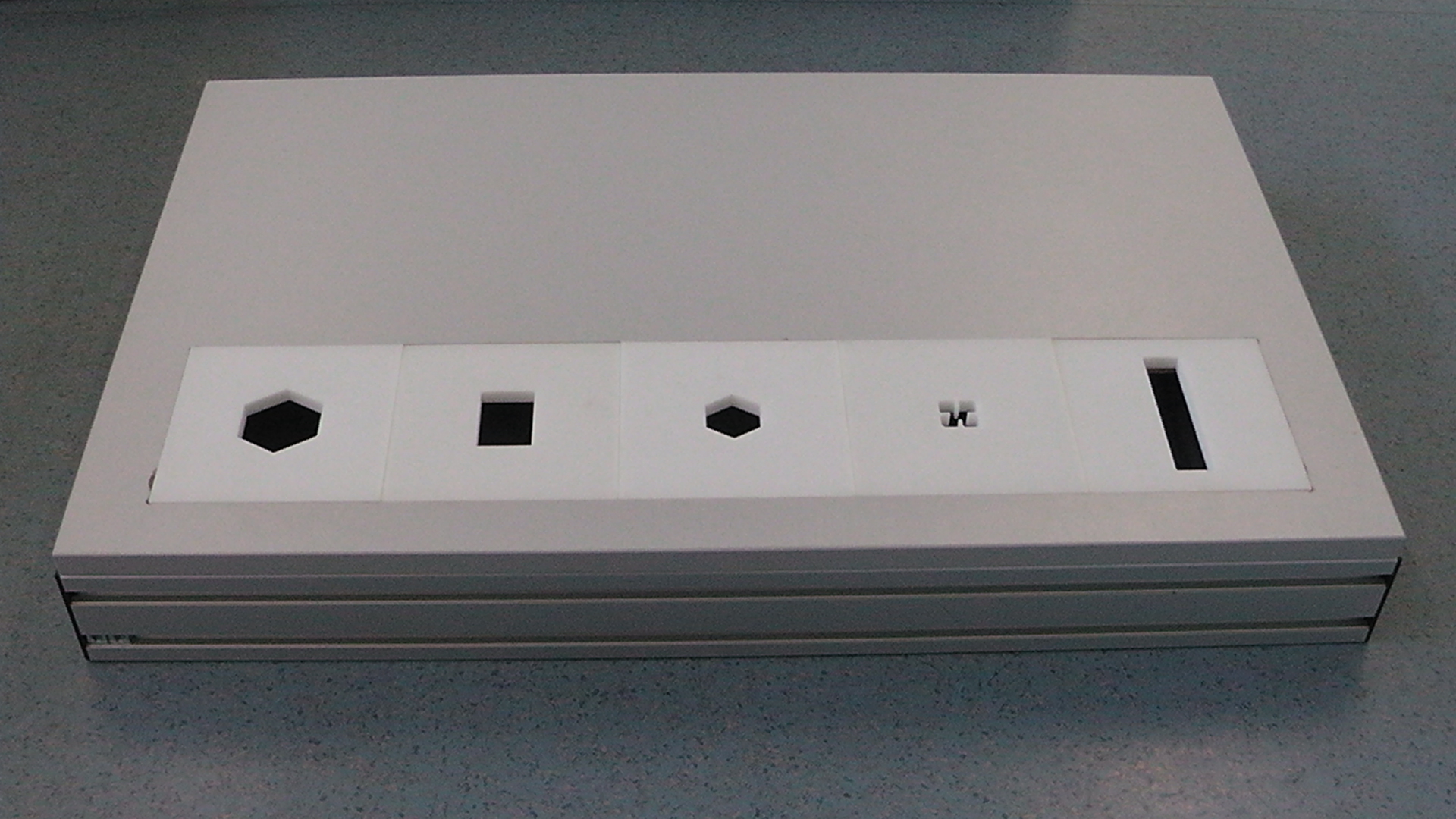Robotics DSL Zoo
Domain Example
| (to be extended ...)
To exemplify the domain of this Robotics DSL Zoo we use the Precision Placement Test (PPT) from the RoboCup@Work competition. It is a new competition in RoboCup that targets the use of robots in industrial scenarios where robots cooperate with human workers and machines for complex tasks ranging from manufacturing, assembly, automation, and parts-handling up to general logistics. The PPT exemplifies the complexity and huge variability of competences and capabilities required to develop today's robot applications. We consider this example to represent the current state of the art involving mature robotics disciplines so that we expect to find consolidated knowledge in the form of DSLs. 
In the following we will explain the PPT and also synthesize a core set of subdomains which are relevant in solving the task and are used used for classification of the collecteded publications. We are aware that this list is non-conclusive, but focus on these for the sake of brevity. The main objective of the PPT is to assess the robot's ability to grasp and place objects into object-specific cavities (see image to the right). The objects are taken from a set of (a priori known) standardized industrial objects such as screws, nuts, bolts and profiles. For the test a single robot is placed in front of a service area which stores the objects to be manipulated. The objective is to pick each object and place it in the corresponding cavity. Once the objects are picked up and placed or the time is over the task ends. To simulate and solve the problem one usually first needs to know the Robot Structure of the target robot platform. This comprises representation of the actual physical realization of robot platforms (e.g., mobile base and manipulator) in terms of their mechanical structure and kinematic as well as dynamic properties. This subdomain roughly corresponds to Part B of Springer Handbook of Robotics (Robot Structures). Furthermore, Coordinate Representations and Transformations between parts of the robot and its environment are required to enable computation of position, force, and velocity of the robot joints. This subdomain roughly corresponds to Part A in the Handbook of Robotics (Robotics Foundations). Exemplary DSL representatives for this subdomain are URDF and the work of Frigerio et al.. In general, the PPT demands advanced Perception and Reasoning and Planning abilities, namely to recognize and match objects and the correct cavities. Further, precise Manipulation and Grasping abilities are required, namely to grasp and place the object in such a manner that it fits into the cavity. These subdomains roughly correspond to Part C (Sensing and Perception), Part A Chapter 9 (AI Reasoning Methods for Robotics), and Part D Chapter 28 (Grasping) in the Handbook of Robotics. For each sub-task (object/cavity detection/recognition and object manipulation) there are several options to approach the problem which all require Coordination primitives such as finite-state machines. For instance, the placement of objects in the cavities can be achieved through first perceiving and computing the position of the cavities and then generating a plan yielding a pose where the object can be dropped in the cavity. A more control-based approach is to compute an approximately position of the cavity and then placing the object on the arena and sliding the object into the cavity by means of force-feedback. This approach demands advanced Motion Control abilities in order to cope with uncertainties in the environment and fulfill constraints such as force-limits which corresponds to roughly to Part A Chapter 7 (Force Control) in the Handbook for Robotics. Example DSLs for this task are TFF and iTaSC. The presented capabilities all need to be integrated in an overall Architecture with Components as the basic building blocks which are preferable re-usable also for other applications. This domain corresponds roughly to Part A Chapter 8 (Robotic Systems Architectures and Programming) in the Handbook of Robotics. |